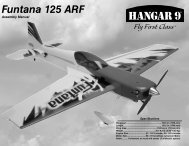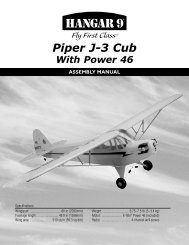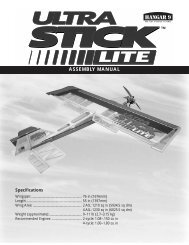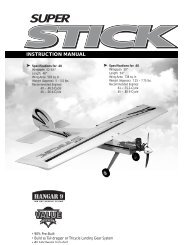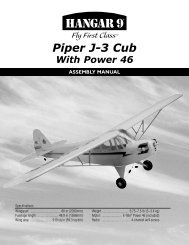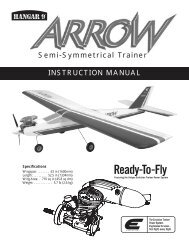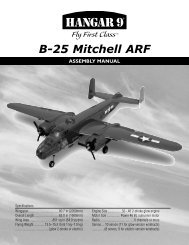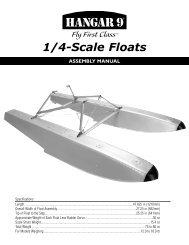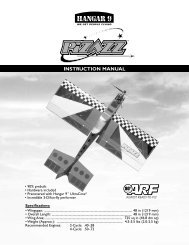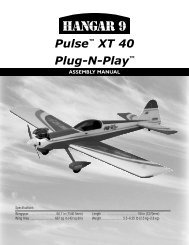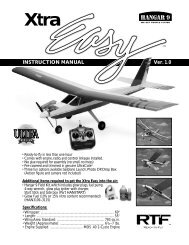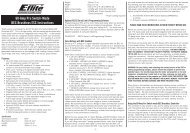You also want an ePaper? Increase the reach of your titles
YUMPU automatically turns print PDFs into web optimized ePapers that Google loves.
Setup and FlyingThe WaterfallThe Torque Rollby Mike McConvilleCONTINUEDWhat it is: The <strong>Edge</strong> “hovers” vertically in place, rotating leftaround its roll axis. The “in-line” midwing configuration of the<strong>Edge</strong> makes it one of the easiest Torque rollers around.Setup: Full 3-D throws in elevator and rudder are a must. An aftCG helps a little. Also gyros provide the best aid to stabilize theaircraft. They won’t do the maneuver for you but they’ll help. Ifound them a fantastic tool in learning to torque roll, kinda liketraining wheels. A few years ago gyros made a big difference forme; now I don’t use them anymore. You’ll need a power plantthat will give you unlimited vertical before you try this one.How it’s done: Fly low along the ground at low throttle andgently add power with up elevator to bring the model into avertical position. Add throttle to keep the nose pointed up andmake corrections with rudder and elevator to keep thingsstraight. If the model hovers but won’t start rolling left, quicklyblip the throttle up and down. The torque change will usually getit going.Trickiest part: Recognizing your correction when the model’sbelly is toward you.The WaterfallWhat it is: This maneuver is a continuous tail-over-nosedescending flip. It is not a loop, but the aircraft actually flopsaround its canopy.Setup: Again, the critical component is having the 3-D elevator.The aft CG helps this the most.How it’s done: Start relatively high. At low throttle, graduallypull the nose up until its near vertical. Just before it stalls, addfull down and, at the same time, add full power. You have tocontinuously “fly” the rudder and ailerons to keep the modelflipping over in a straight line. To do consecutive Waterfalls,continue to hold full down and to “fly” rudder and ailerons andchop the throttle as the nose comes back up to vertical, then addfull power as it flips straight down.Tip: Think push the rudder toward the low wing when thebelly is toward you. You have to be fast with throttlecorrections. Add bursts of power, along withrudder/elevator corrections. If you simply hold fullthrottle, you’ll climb out of the maneuver.Recovery: Fly out at full throttle.Worst way to mess up: Have an unreliable engine. TorqueRolls are tough on engines because there’s only prop-inducedairflow over the cylinders. I’d really recommend putting thebaffling in the cowl if you are running a twin-cylinder engine andplan on doing Torque Rolls.The Torque RollTrickiest part: No doubt here—flying the rudder and aileroncorrectly. You have to fly the rudder and ailerons and makeconstant corrections. The amount you add will vary. If you do notdo this, the model will fall off into a knife edge spin.Recovery: Just neutralize the elevator and the <strong>Edge</strong> will quitflipping, but expect some over-rotation, so practice high untilyou get the feel of it. Fly out straight and level or stop the rotationwhile pointed vertical and go into a Torque Roll.Worst way to mess up: Take it down too low, over-controlyour elevator on recovery, and snap into the ground. To avoidthis, simply change rates on your elevator to normal travel.47



